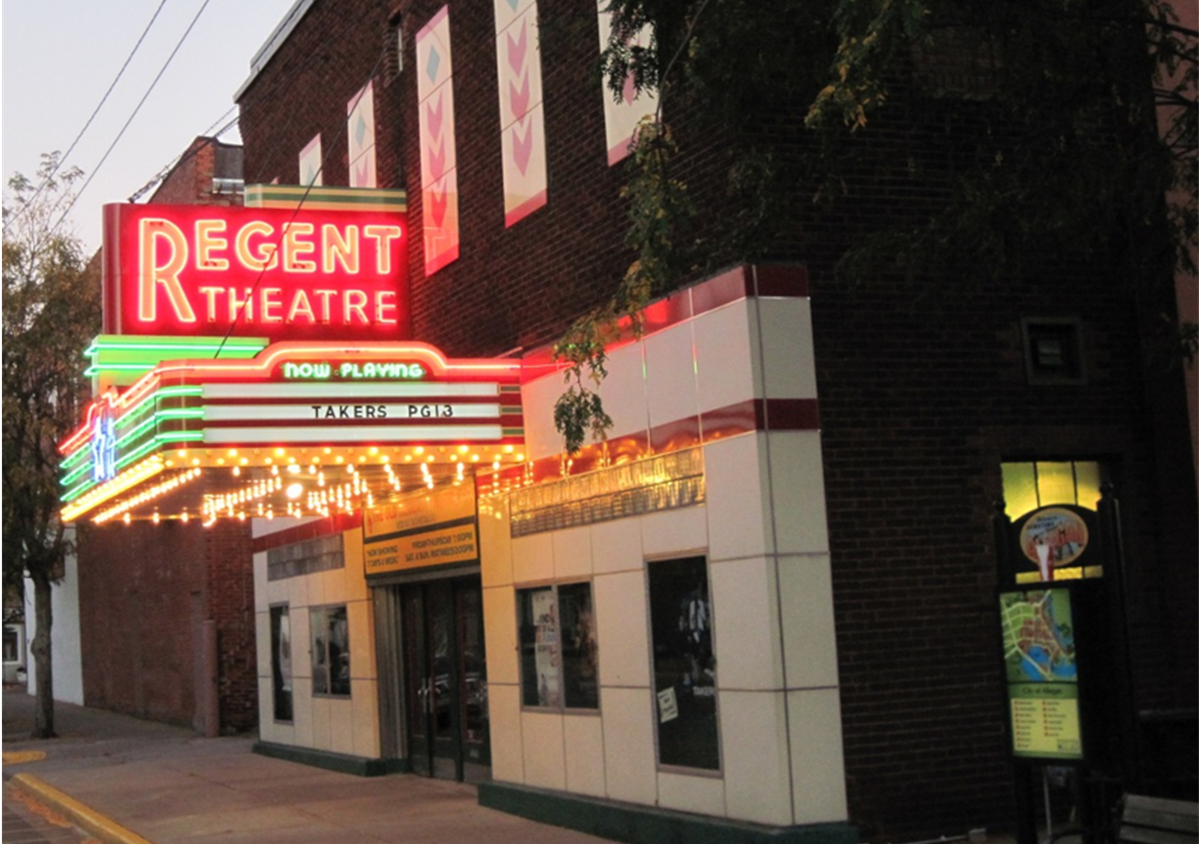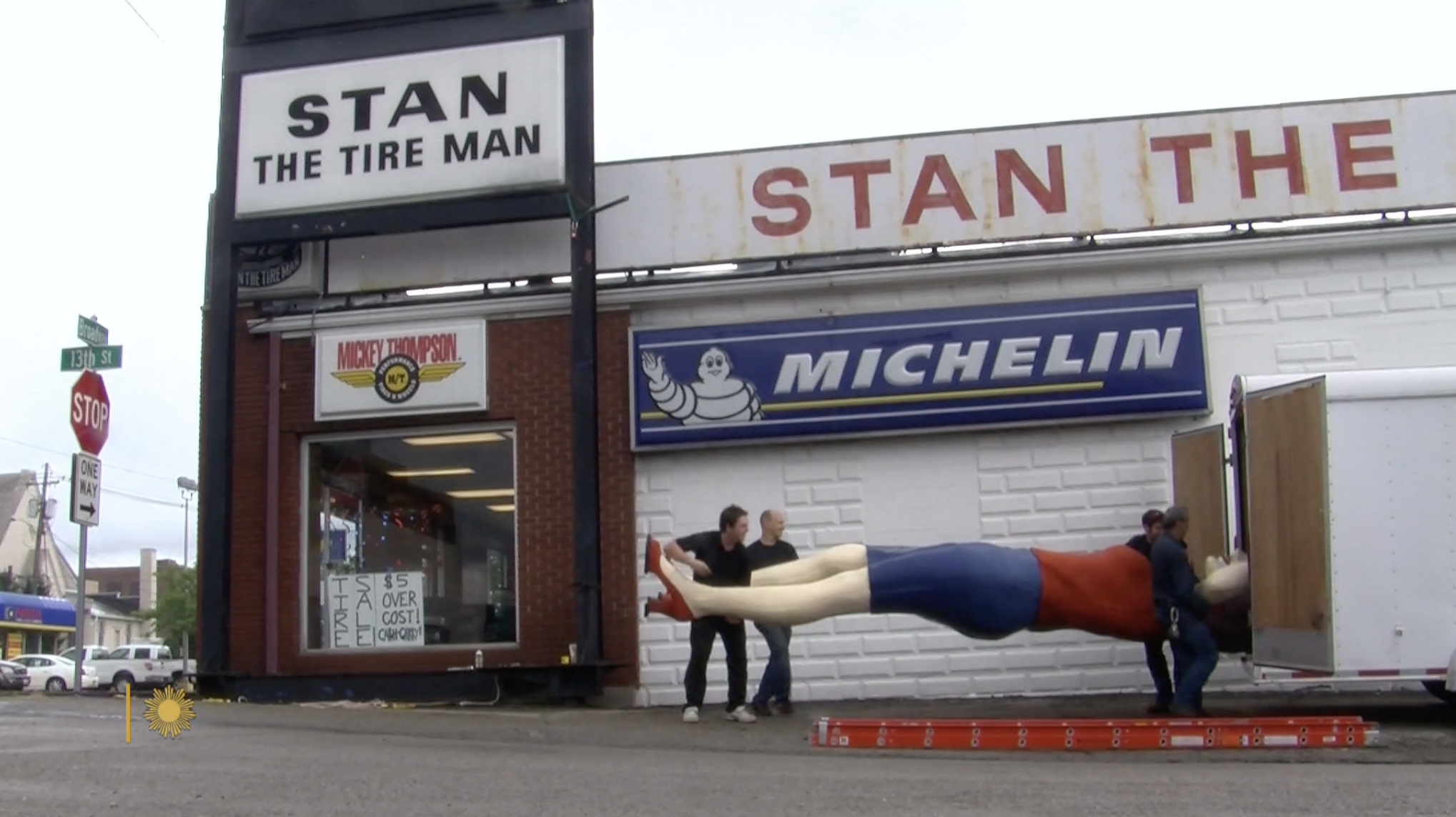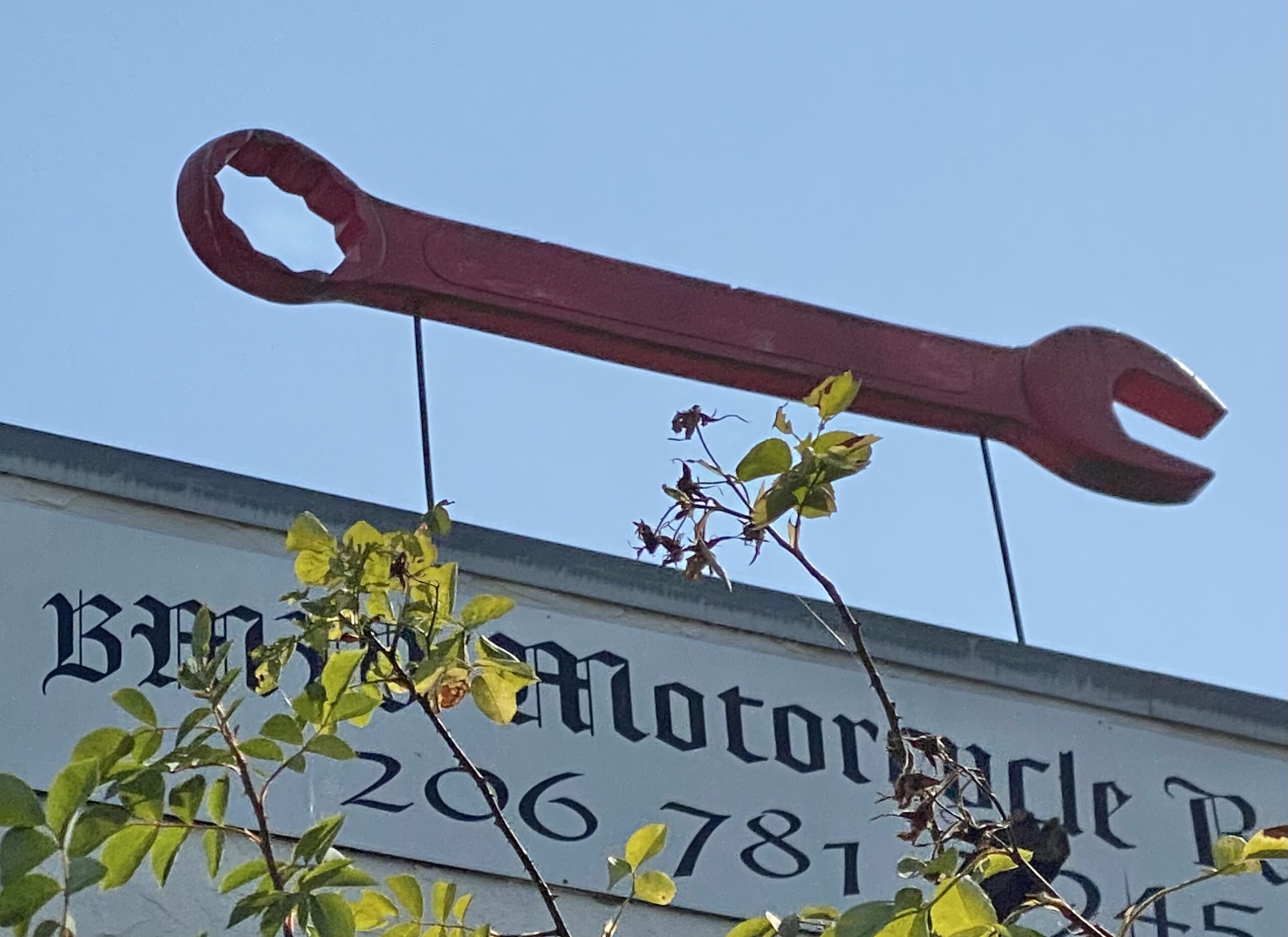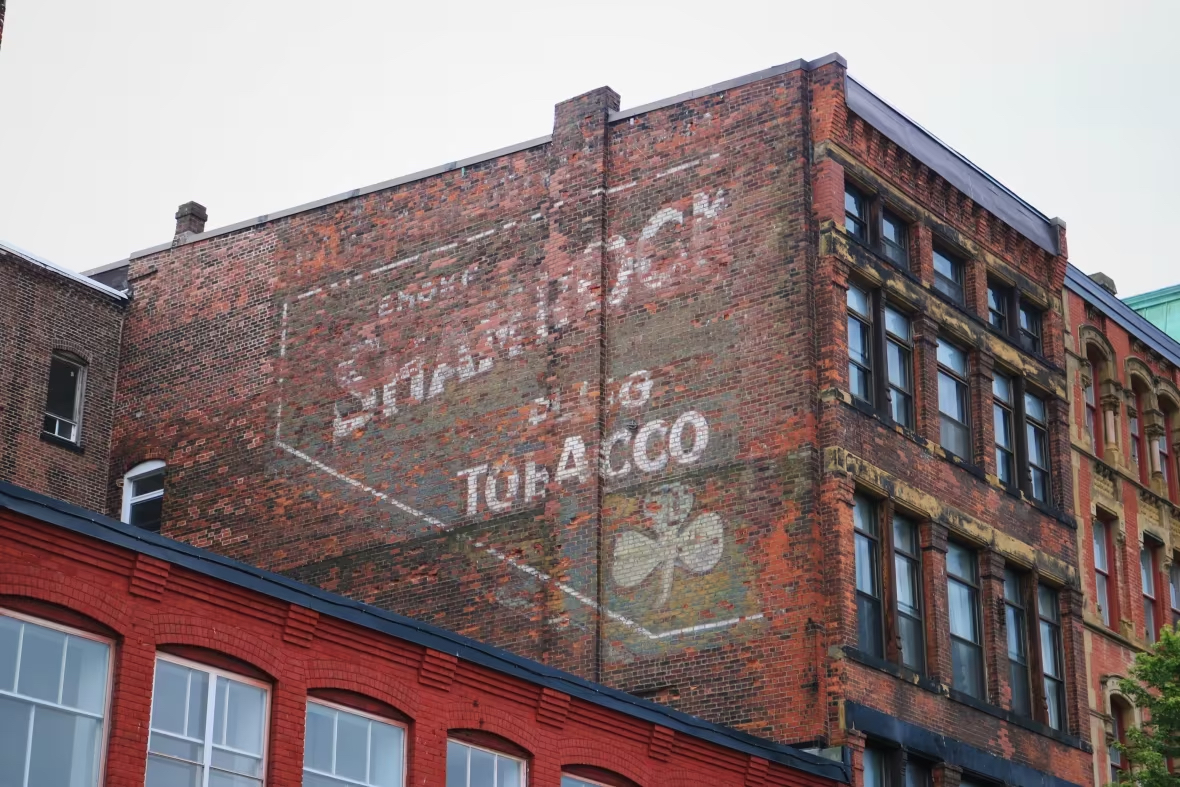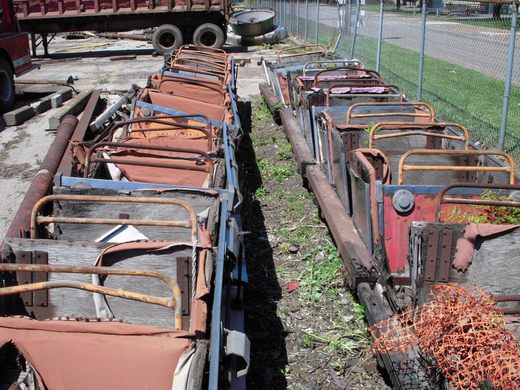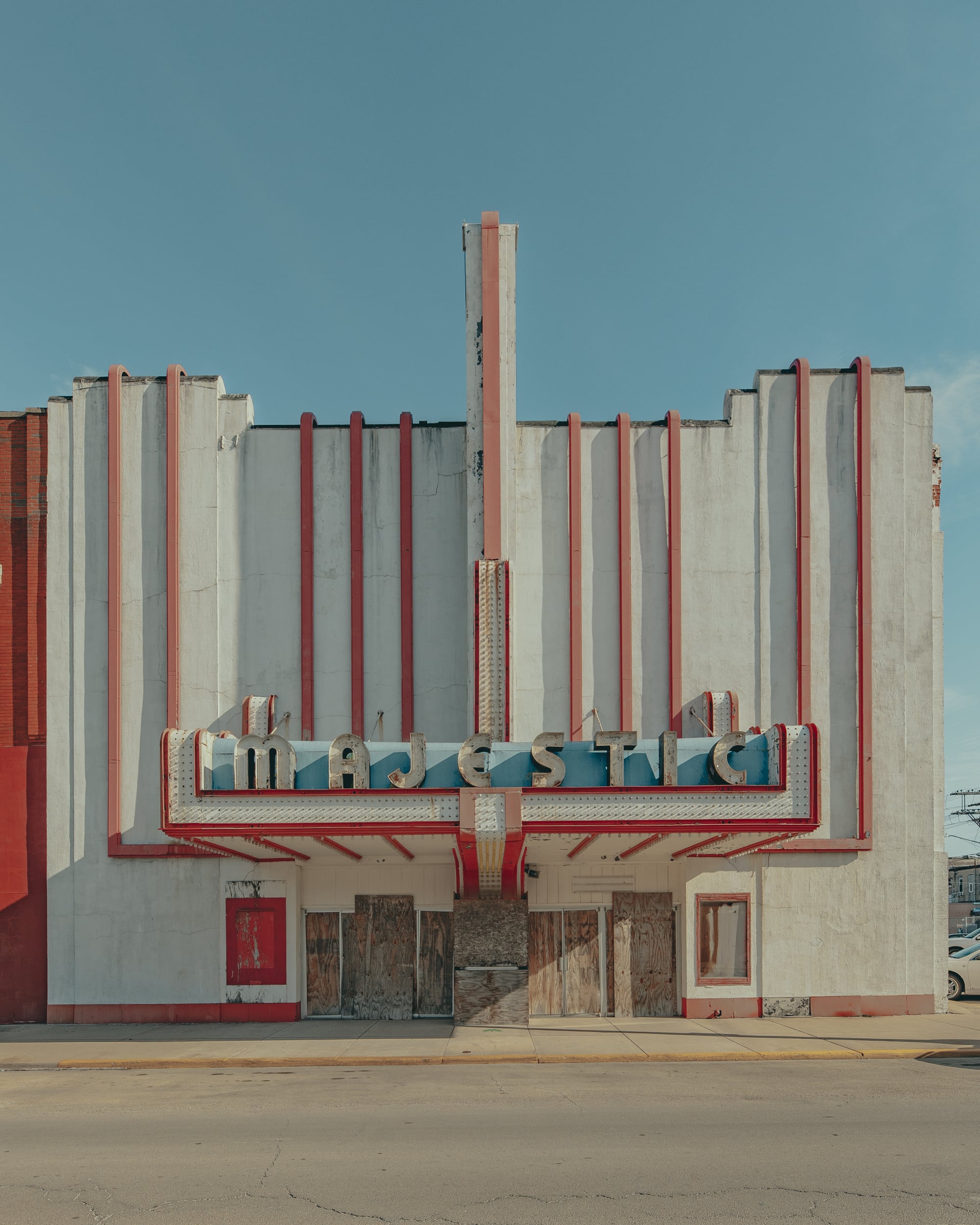Main Spotlight: How Main Streets Can Preserve Historic Neon Signs
The Regent Theater in Allegan Main Street, Mich. Photo courtesy of the NTHP
Fans of “Muffler Men” to the rescue
Muffler man on the move in Mt. Vernon, Illinois
From CBS News: Back in the 1960s, 20-foot-tall fiberglass statues were considered the height of outdoor advertising. But while these giants became popular roadside attractions, many fell into disrepair or were lost to the ravages of time. Today, enthusiasts search for surviving so-called “Muffler Men,” and even work to restore them. Correspondent Conor Knighton joins the hunt.
Getting a grip on the history of Aurora’s big red wrench
A giant red wrench sits atop a motorcycle repair shop on Aurora Avenue just north of the Aurora Bridge. (Feliks Banel/KIRO Newsradio)
From KIRO Newsradio: Driving south on Highway 99 just north of the Aurora Bridge, many motorists can’t help but notice a giant, red wrench on top of a motorcycle repair shop.
But what are the origins of this iconic piece of Seattle roadside art?
Fading murals and old brick ads: hunting for ‘ghost signs’ in uptown Saint John
Fading advertising murals of the 19th and early 20th centuries, like this one for Shamrock Plug Tobacco on Prince William Street, viewed from a back alley on Germain Street, reveal a bygone era in Saint John’s commerical history. (Julia Wright/CBC)
From CBC: The next time you’re walking around uptown Saint John, don’t forget to look up. Hidden in obscure alleyways and side-streets are traces of centuries of history.
Ghost signs are the fading remains of hand-painted advertising murals popular in the 19th and early 20th centuries. Businesses would also frequently etch their names on the bricks themselves.
In New Brunswick, these relics are “not very common at all outside Saint John,” said art historian John Leroux, manager of collections and exhibitions at the Beaverbrook Art Gallery in Fredericton.
A World Tour of Abandoned Amusement Parks
Recycled Cascade Park Rollercoasters pennsyloco/CC BY 3.0
From Atlas Obscura: There aren’t many places in the world that invoke pure joy like a theme park or amusement park—the rides, the food, the decor, they’re all screwy. But they don’t last forever. Some don’t really even get a chance to start. In many places both fun and funds run dry, leaving behind a unique kind of abandoned space, where you can almost hear the laughter and the screams in an uninhabited ruin.
Just off Highway 12 in Onsted, Michigan, a collection of fiberglass prehistoric creatures still roam the forest. First opened in 1963, the Prehistoric Forest lured highway travelers in with its massive dinos and waterslide. But once the highways were rerouted, extinction was inevitable and the Prehistoric Forest closed in 2002. In Lemery, Philippines, a treat-gone-sour still attracts the occasional visitor. Designed as the “Disneyland of the Philippines,” Fantasy World closed before its grand opening amid financial troubles. Today, a once-majestic castle overlooks an empty, overgrown erstwhile attraction. From a forlorn waterpark baked by desert heat to a Western-themed attraction left to rot in Japan, here are some of our most interesting abandoned amusement parks.
‘Abandoned Theatres’ Spotlights the Remains of Small-Town Midwestern Cinemas
Majestic Theater, Streator, Illinois Ben Geier photo
From Colossal: Like many sectors of the U.S. economy, movie theaters struggled during the Covid-19 pandemic. Many were forced to shut their doors after months of lockdown, an additional blow to the small, independently run spots that had been competing with multiplex chains for decades.
When the pandemic hit, Ben Geier already had his eye on local cinemas, particularly those in Midwestern areas that closed years before. He photographed the remains for Abandoned Theatres, an ongoing series that’s both a nostalgic and clear-eyed look at small-town life. As more cinemas shuttered in 2020, Geier’s subject matter became more abundant. “Covid times really allowed me to get out on the road and photograph most of the theatres without anybody around, which gave each photo an eerie quality,” he tells Colossal.



